A Family of Y-Impedance-Network Half-Bridge Converters with Additional Voltage Adjustment Function
Abstract
:1. Introduction
2. Operating Principle and Analysis
3. Voltage Gain Analysis
4. Simulation Verifications
5. Experimental Verifications
6. Conclusions
Author Contributions
Funding
Conflicts of Interest
Abbreviations
| BIPV | Building Integrated Photovoltaic |
| ZSI | Z-source inverter |
| DCM | discontinuous conduction mode |
| qZSI | quasi-Z-source inverter |
References
- Raugei, M.; Frankl, P. Life cycle impacts and costs of photovoltaic systems: Current state of the art and future outlooks. Energy 2009, 34, 392–399. [Google Scholar] [CrossRef]
- Xue, Y.; Chang, L.; Kjaer, S.B.; Bordonau, J.; Shimizu, T. Topologies of single-phase inverters for small distributed power generators: An overview. IEEE Trans. Power Electron. 2004, 19, 1305–1314. [Google Scholar] [CrossRef]
- Debnath, D.; Chatterjee, K. Solar photovoltaic-based stand-alone scheme incorporating a new boost inverter. IET Power Electron. 2016, 9, 621–630. [Google Scholar] [CrossRef]
- Asl, E.S.; Babaei, E.; Sabahi, M.; Nozadian, M.H.B.; Cecati, C. New half-bridge and full-bridge topologies for a switched-boost inverter with continuous input current. IEEE Trans. Ind. Electron. 2018, 65, 3188–3197. [Google Scholar] [CrossRef]
- Kim, B.; Kim, S.; Huh, D.Y.; Choi, J.H.; Kim, M. Hybrid resonant half-bridge DC/DC converter with wide input voltage range. In Proceedings of the 2018 IEEE Applied Power Electronics Conference and Exposition (APEC), San Antonio, TX, USA, 4–8 March 2018. [Google Scholar]
- Peng, F.Z. Z-source inverter. IEEE Trans. Ind. Appl. 2003, 39, 504–510. [Google Scholar] [CrossRef]
- Zhang, G.; Li, Z.; Zhang, B.; Qiu, D.; Xiao, W.; Halang, W.A. A Z-Source Half-Bridge Converter. IEEE Trans. Ind. Electron. 2013, 61, 1269–1279. [Google Scholar] [CrossRef]
- Strzelecki, R.; Adamowicz, M.; Strzelecka, N.; Bury, W. New type T-source inverter. In Proceedings of the 2009 Compatibility and Power Electronics, Badajoz, Spain, 20–22 May 2009. [Google Scholar]
- Kumar, S.P.; Shailaja, P. T-shaped Z-source inverter. Int. J. Eng. Res. Technol. 2012, 1, 1–6. [Google Scholar]
- Qian, W.; Peng, F.Z.; Cha, H. Trans-Z-Source inverters. IEEE Trans. Power Electron. 2003, 26, 3453–3463. [Google Scholar] [CrossRef]
- Loh, P.C.; Li, D.; Blaabjerg, F. Γ-Z-source inverters. IEEE Trans. Power Electron. 2013, 28, 4880–4884. [Google Scholar] [CrossRef]
- Loh, P.C.; Blaabjerg, F. Magnetically coupled impedance-source inverters. IEEE Trans. Ind. Appl. 2013, 49, 2177–2187. [Google Scholar] [CrossRef]
- Siwakoti, Y.P.; Blaabjerg, F.; Galigekere, V.P.; Ayachit, A.; Kazimierczuk, M.K. A-source impedance network. IEEE Trans. Power Electron. 2016, 31, 8081–8087. [Google Scholar] [CrossRef]
- Siwakoti, Y.P.; Loh, P.C.; Blaabjerg, F.; Town, G. Y-source impedance network. IEEE Trans. Power Electron. 2014, 29, 3250–3254. [Google Scholar] [CrossRef]
- Asghari-Gorji, S.; Mostaan, A.; Javadi, H. A new structure of Y-source inverters with continous input current and high voltage gain. In Proceedings of the 6th Power Electronics, Drive Systems & Technologies Conference (PEDSTC2015), Tehran, Iran, 3–4 February 2015. [Google Scholar]
- Siwakoti, Y.P.; Blaabjerg, F.; Loh, P.C. Quasi-Y-source inverter. In Proceedings of the 2015 Australasian Universities Power Engineering Conference (AUPEC), Wollongong, Australia, 27–30 September 2015. [Google Scholar]
- Liu, H.; Li, Y.; Liu, K.; Loh, P.C.; Wang, W.; Xu, D.; Blaabjerg, F. Extended quasi-Y-source inverter with suppressed inrush and leakage effects. IET Power Electron. 2018, 12, 719–728. [Google Scholar] [CrossRef]
- Fang, X.; Ding, X.; Zhong, S.; Tian, Y. Improved quasi-Y-source DC-DC converter for renewable energy. CPSS Trans. Power Electron. Appl. 2019, 4, 163–170. [Google Scholar] [CrossRef]
- Ahmed, H.F.; Cha, H.; Kim, S.H.; Kim, H.G. Switched-coupled-inductor quasi-Z-source inverter. IEEE Trans. Power Electron. 2015, 31, 1241–1254. [Google Scholar] [CrossRef]
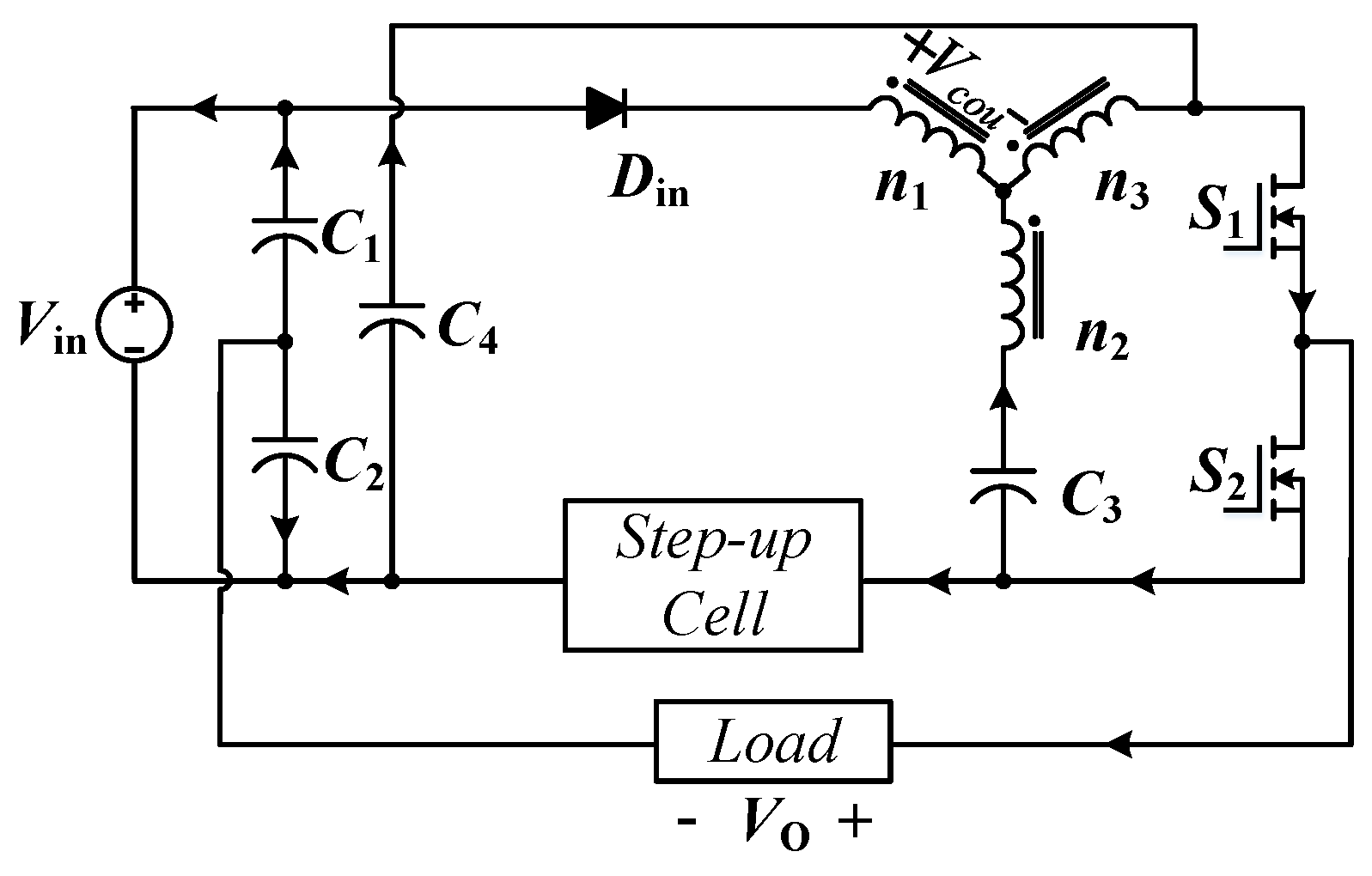
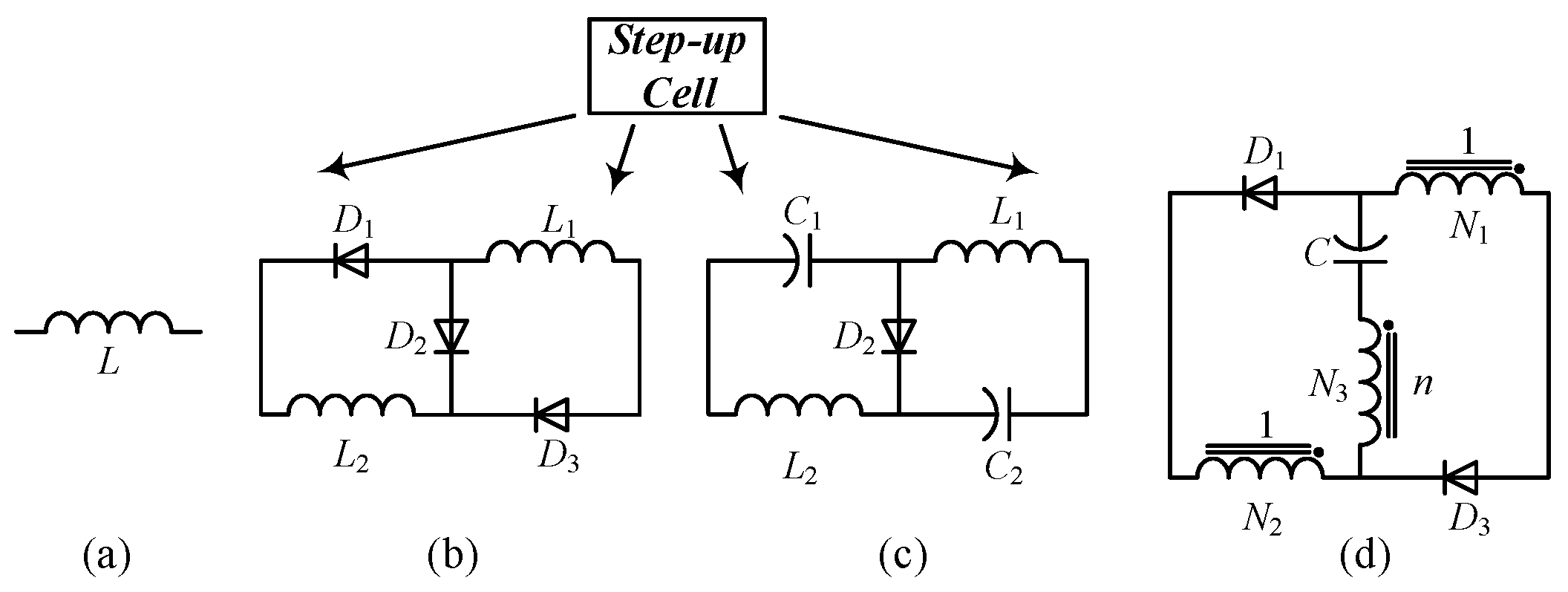

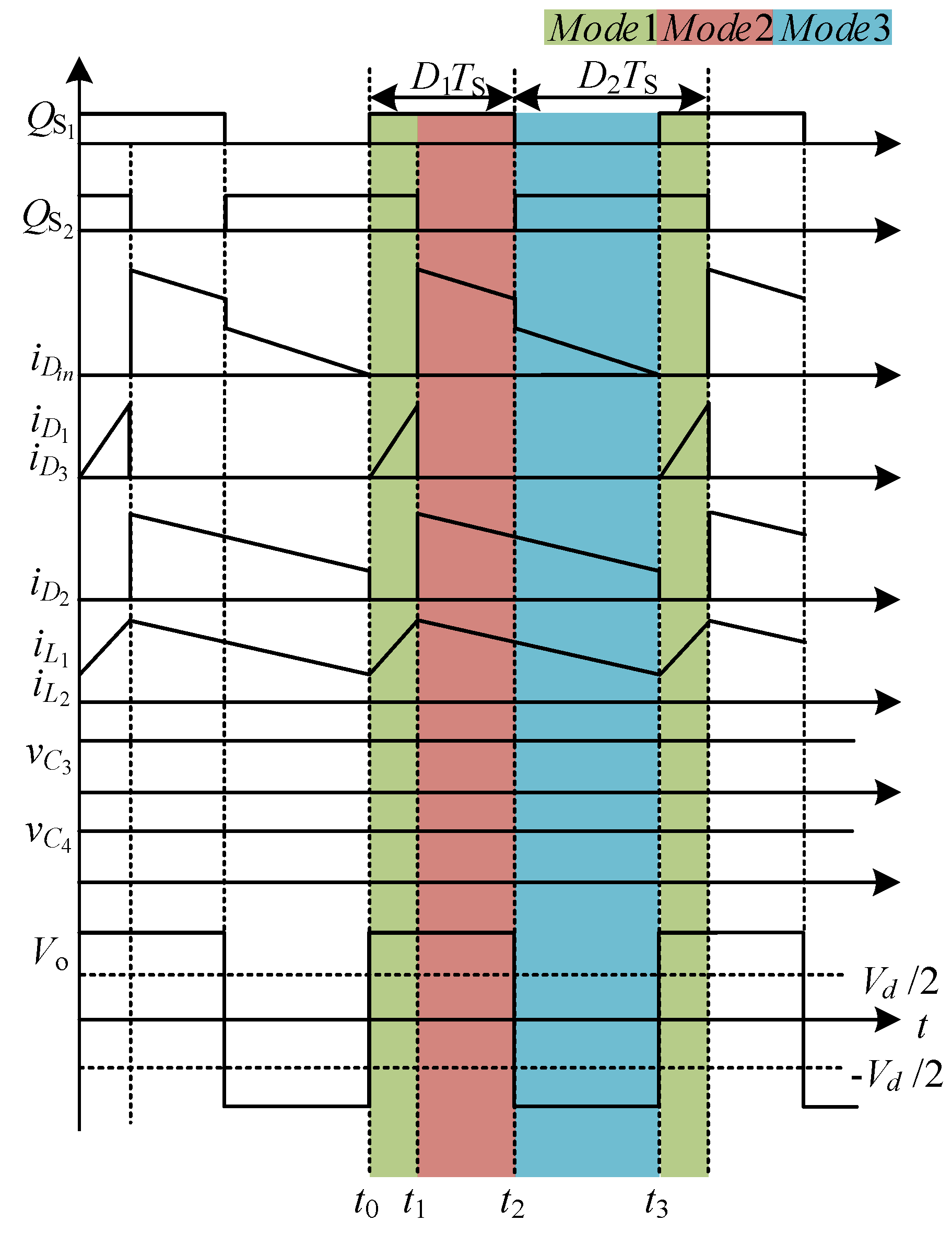


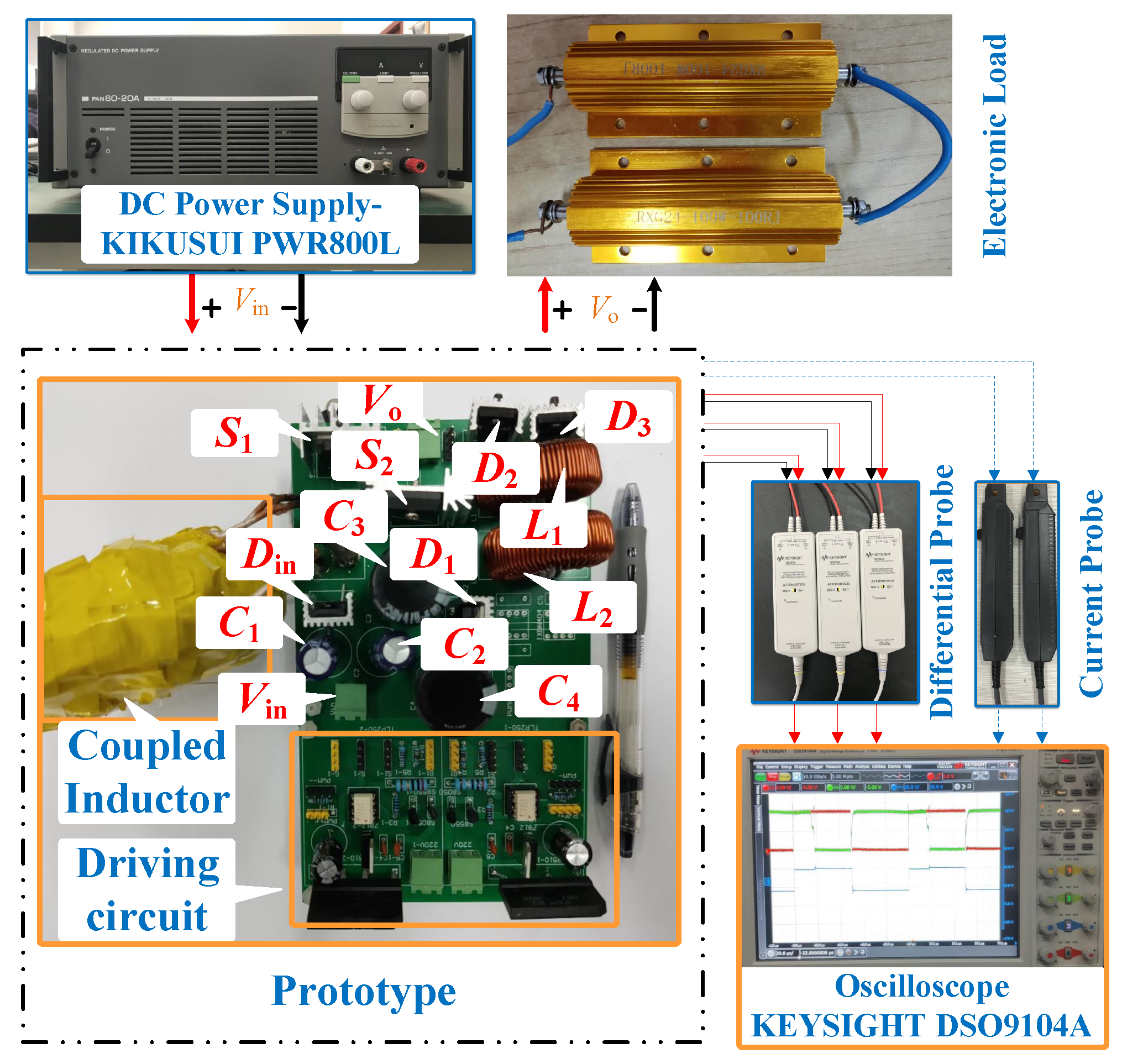

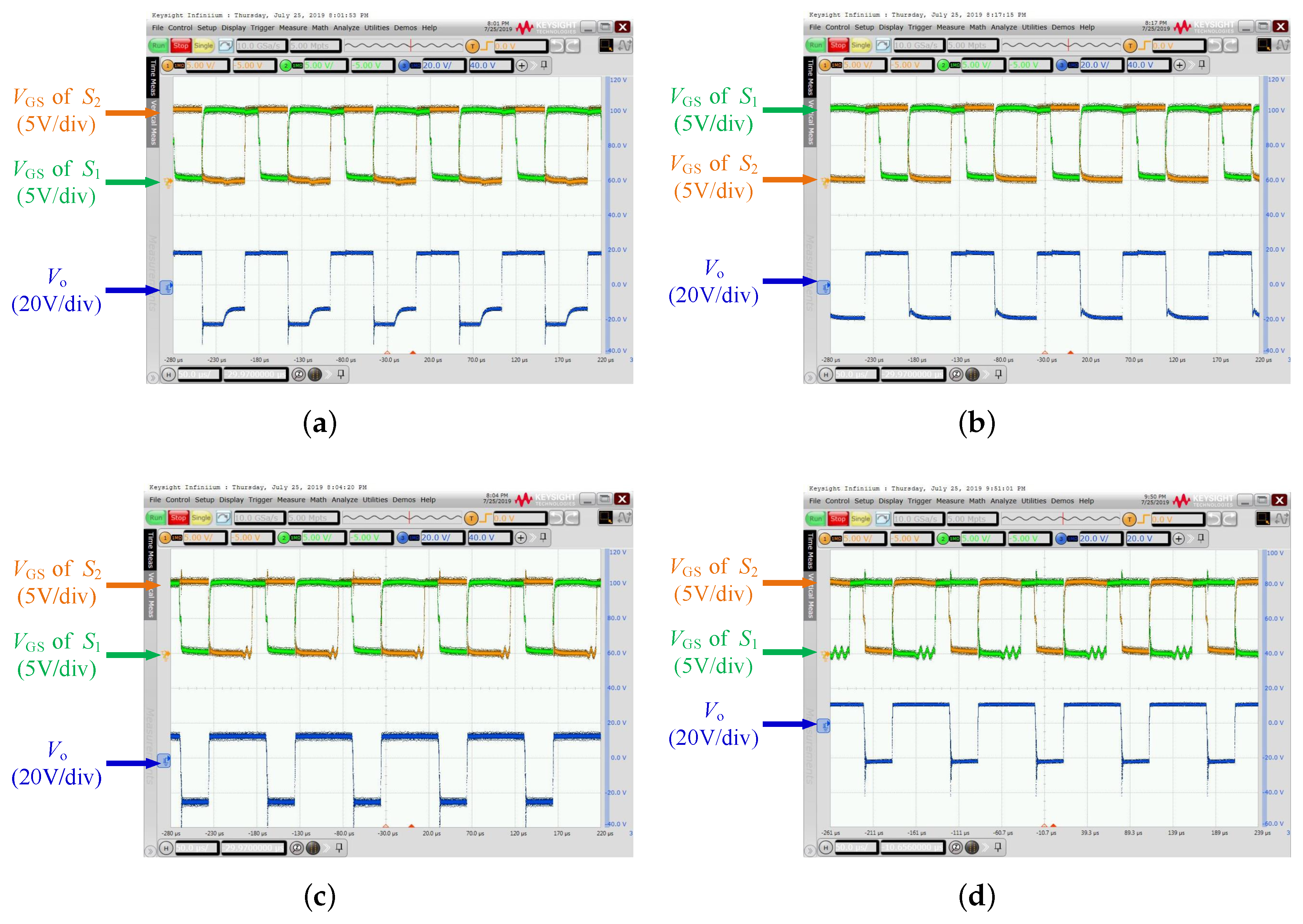
| Converters | Voltage Gain G | ||
|---|---|---|---|
| Inductor Y-impedance-network | |||
| Switched inductor Y-impedance-network | |||
| Quasi Z-source Y-impedance-network | |||
| Switched-coupled-inductor Y-impedance-network |
| DC Power Supply | Oscilloscope | Voltage Probe | Current Probe |
|---|---|---|---|
| KIKUSUI PWR800L | Agilent DSO7104A | KEYSIGHT N2843A | Agilent 1147A |
| Parameters | Value | Parasitic Parameters |
|---|---|---|
| Input voltage | 10 [V] | |
| Output voltage | 60 [V] | |
| Switching frequency | 10 [kHz] | |
| Driving IC | TLP250 | |
| MOSFET , | IXTQ88N30P | 40 [m] |
| Inductors | 420 [H] | 200 [m] |
| Three winding-coupled | Magnetizing inductance 470 [H] | |
| inductor | Turns ratio 5:1:3 | 290 [m]: 260 [m]: 270 [m] |
| Diodes | MBRF20200CT | 1 [V] / 0.05 [m] |
| Capacitors | 47 [F]/100 [V] | 500 [m] |
| Capacitor | 470 [F]/250 [V] | 200 [m] |
| Resistive load | 200 [] |
© 2019 by the authors. Licensee MDPI, Basel, Switzerland. This article is an open access article distributed under the terms and conditions of the Creative Commons Attribution (CC BY) license (http://creativecommons.org/licenses/by/4.0/).
Share and Cite
Zhang, G.; Chen, H.; Qu, L.; Chen, S.; Zhang, Y. A Family of Y-Impedance-Network Half-Bridge Converters with Additional Voltage Adjustment Function. Energies 2019, 12, 3430. https://doi.org/10.3390/en12183430
Zhang G, Chen H, Qu L, Chen S, Zhang Y. A Family of Y-Impedance-Network Half-Bridge Converters with Additional Voltage Adjustment Function. Energies. 2019; 12(18):3430. https://doi.org/10.3390/en12183430
Chicago/Turabian StyleZhang, Guidong, Haodong Chen, Lili Qu, Sizhe Chen, and Yun Zhang. 2019. "A Family of Y-Impedance-Network Half-Bridge Converters with Additional Voltage Adjustment Function" Energies 12, no. 18: 3430. https://doi.org/10.3390/en12183430
APA StyleZhang, G., Chen, H., Qu, L., Chen, S., & Zhang, Y. (2019). A Family of Y-Impedance-Network Half-Bridge Converters with Additional Voltage Adjustment Function. Energies, 12(18), 3430. https://doi.org/10.3390/en12183430





